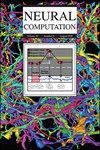Nearly Optimal Learning Using Sparse Deep ReLU Networks in Regularized Empirical Risk Minimization With Lipschitz Loss
IF 2.1
4区 计算机科学
Q3 COMPUTER SCIENCE, ARTIFICIAL INTELLIGENCE
引用次数: 0
Abstract
We propose a sparse deep ReLU network (SDRN) estimator of the regression function obtained from regularized empirical risk minimization with a Lipschitz loss function. Our framework can be applied to a variety of regression and classification problems. We establish novel nonasymptotic excess risk bounds for our SDRN estimator when the regression function belongs to a Sobolev space with mixed derivatives. We obtain a new, nearly optimal, risk rate in the sense that the SDRN estimator can achieve nearly the same optimal minimax convergence rate as one-dimensional nonparametric regression with the dimension involved in a logarithm term only when the feature dimension is fixed. The estimator has a slightly slower rate when the dimension grows with the sample size. We show that the depth of the SDRN estimator grows with the sample size in logarithmic order, and the total number of nodes and weights grows in polynomial order of the sample size to have the nearly optimal risk rate. The proposed SDRN can go deeper with fewer parameters to well estimate the regression and overcome the overfitting problem encountered by conventional feedforward neural networks.基于稀疏深度ReLU网络的带Lipschitz损失正则化经验风险最小化的近最优学习。
我们提出了一种稀疏深度 ReLU 网络(SDRN)回归函数估计器,该估计器由正则化经验风险最小化与 Lipschitz 损失函数获得。我们的框架可应用于各种回归和分类问题。当回归函数属于具有混合导数的 Sobolev 空间时,我们为 SDRN 估计器建立了新的非渐近超额风险边界。我们得到了一种新的、近乎最优的风险率,即只有当特征维度固定时,SDRN 估计器才能达到与一维非参数回归几乎相同的最优最小收敛率,且其维度涉及对数项。当维度随样本量增长时,估计器的收敛速度稍慢。我们的研究表明,SDRN 估计器的深度随样本量的对数阶增长,节点和权重的总数随样本量的多项式阶增长,从而获得接近最优的风险率。所提出的 SDRN 可以用更少的参数进行更深入的回归估计,克服了传统前馈神经网络所遇到的过拟合问题。
本文章由计算机程序翻译,如有差异,请以英文原文为准。
求助全文
约1分钟内获得全文
求助全文
来源期刊

Neural Computation
工程技术-计算机:人工智能
CiteScore
6.30
自引率
3.40%
发文量
83
审稿时长
3.0 months
期刊介绍:
Neural Computation is uniquely positioned at the crossroads between neuroscience and TMCS and welcomes the submission of original papers from all areas of TMCS, including: Advanced experimental design; Analysis of chemical sensor data; Connectomic reconstructions; Analysis of multielectrode and optical recordings; Genetic data for cell identity; Analysis of behavioral data; Multiscale models; Analysis of molecular mechanisms; Neuroinformatics; Analysis of brain imaging data; Neuromorphic engineering; Principles of neural coding, computation, circuit dynamics, and plasticity; Theories of brain function.
 求助内容:
求助内容: 应助结果提醒方式:
应助结果提醒方式:


